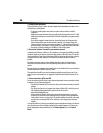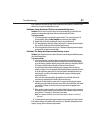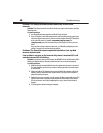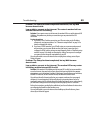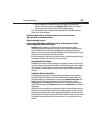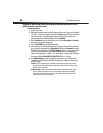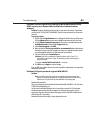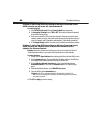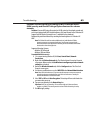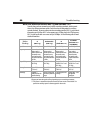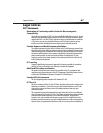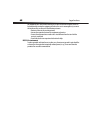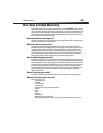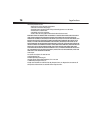
66
Troubleshooting
What's the difference between 802.11g and draft 802.11n?
Currently there are three commonly used wireless networking standards, which transmit
data at very different maximum speeds. Each is based on the designation for certifying
network standards. The most common wireless networking standard, 802.11g, can transmit
information up to 54 Mbps. 802.11a also supports up to 54 Mbps, but in the 5 GHz frequency.
802.11n draft specification can connect at up to 300 Mbps. See the following table for more
detailed information.
*Distance and connection speeds will vary depending on your networking environment.
****This Router is compatible with products based on the same version of the draft 802.11n
specifications and may require a software upgrade for best results.
Wireless
Technology
G
(802.11g)
Enhanced G
(802.11g)
N
(draft 802.11n)
N1 MIMO
(draft 802.11n
with MIMO)
Speed/data rate Up to 54 Mbps* Up to 54 Mbps* Up to 300 Mbps* Up to 300 Mbps*
Frequency Common household
devices such as
cordless phones and
microwave ovens
may interfere with
the unlicensed band
2.4 GHz
Common household
devices such as
cordless phones and
microwave ovens
may interfere with
the unlicensed band
2.4 GHz
Common household
devices such as
cordless phones and
microwave ovens
may interfere with
the unlicensed band
2.4 GHz
Common household
devices such as
cordless phones and
microwave ovens
may interfere with
the unlicensed band
2.4 GHz
Compatibility Compatible with
802.11b/g
Compatible with
802.11b/g
Compatible with
draft 802.11n** and
802.11b/g
Compatible with
draft 802.11n** and
802.11b/g
Coverage* Up to 400 feet
(121.9 m)*
Up to 1,000 feet
(304.8 m)*
Up to 1,200 feet
(365.8 m)*
Up to 1,400 feet
(426.7 m)*
Advantage Common—
widespread use for
Internet sharing
Better coverage and
consistent speed and
range
Enhanced speed and
coverage
Leading edge—best
coverage and
through put



